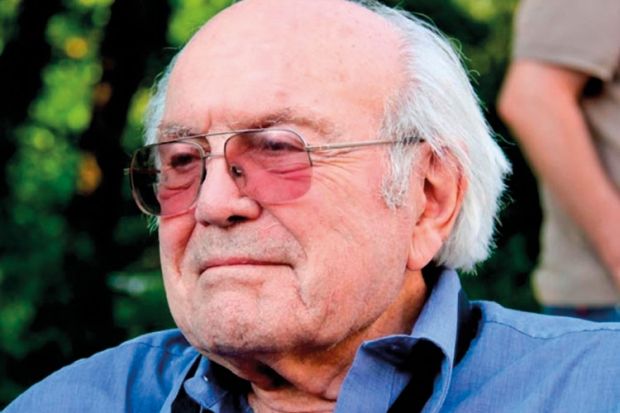Source: Sergio Ferrara
Bruno Zumino was born in Rome on 28 April 1923 and studied there for his first degree (1945). He moved to New York University in 1951 as a research associate before being promoted to assistant professor, although he returned to Europe in 1968 to work at the European Organisation for Nuclear Research (Cern) as a senior researcher.
In 1981, however, Professor Zumino’s wife, Mary K. Gaillard, became the first tenured woman professor in the physics department at the University of California, Berkeley, so he too joined the faculty. He was employed there until retirement in 1994 but continued to be active until 2013, when a “Brunofest” symposium was held in honour of his 90th birthday.
A highly inventive mathematician and one of the first theoreticians to understand the deep significance of symmetry, Professor Zumino joined forces at Cern with Julius Wess to develop SUSY as an explanation for particle interactions involving three of the four fundamental forces in nature, namely the strong, electromagnetic and weak forces.
Once the “Wess-Zumino model” was firmly established, Professor Zumino collaborated with Stanley Deser to include gravity as well, leading to the comprehensive theory of supergravity.
“Supersymmetry is so beautiful and suggestive that most of us think it has got to show up some time in nature, although so far it hasn’t,” said Nobel Laureate Steven Weinberg, professor of physics at the University of Texas at Austin.
Just as researchers at Cern eventually tracked down evidence of the elusive Higgs boson, many believe that the Large Hadron Collider will find some of the subatomic “superpartners” whose existence is implied by Professor Zumino’s theories. Some even hope that these will prove to be the mysterious “dark matter”, which makes up a quarter of the mass of the universe and represents another crucial element in most models.
“When he introduced supersymmetry,” commented Lawrence Hall, professor of physics at UC Berkeley, Professor Zumino “could have had no idea that 40 years later there would be a laboratory at Cern with more than 4,000 people looking for evidence of the theory”.
Professor Zumino was honoured with the 1987 Dirac Prize, 1989 Max Planck medal, 1992 Humboldt Research Award and 2005 Enrico Fermi Prize of the Italian Physical Society. He died on 22 June and is survived by his wife and three stepchildren.
Register to continue
Why register?
- Registration is free and only takes a moment
- Once registered, you can read 3 articles a month
- Sign up for our newsletter
Subscribe
Or subscribe for unlimited access to:
- Unlimited access to news, views, insights & reviews
- Digital editions
- Digital access to THE’s university and college rankings analysis
Already registered or a current subscriber? Login

